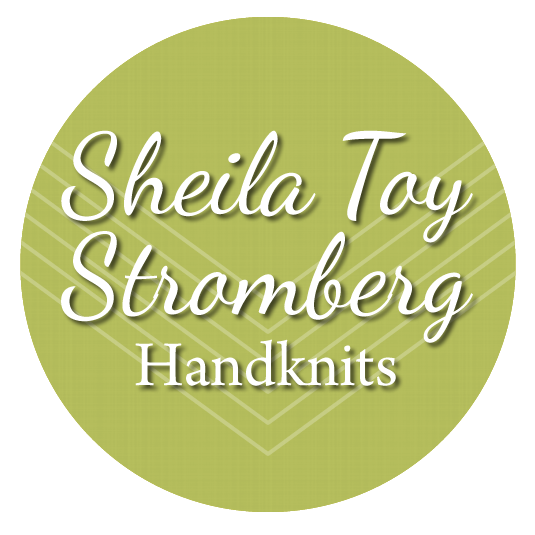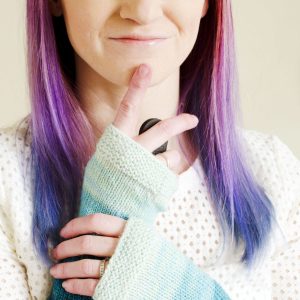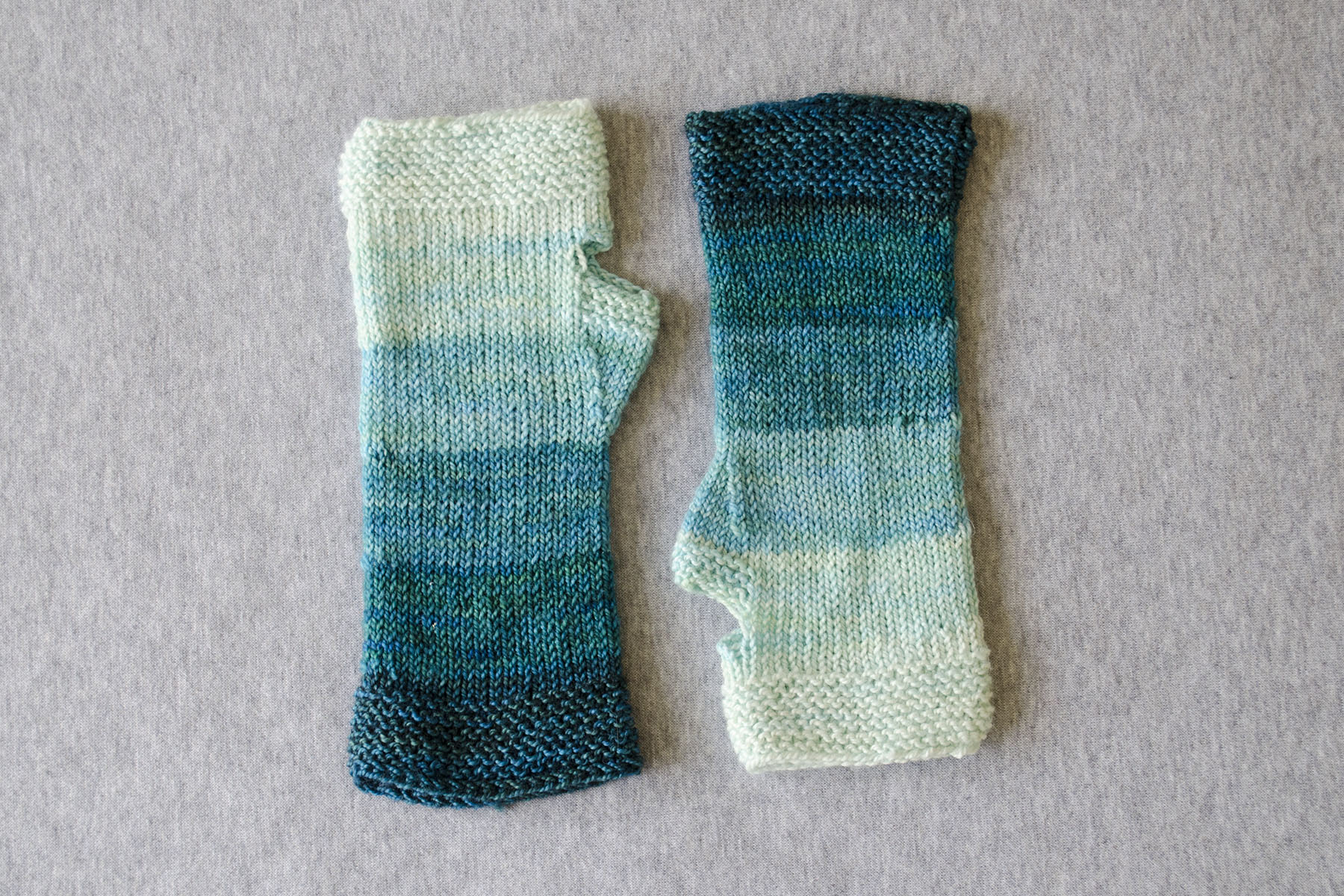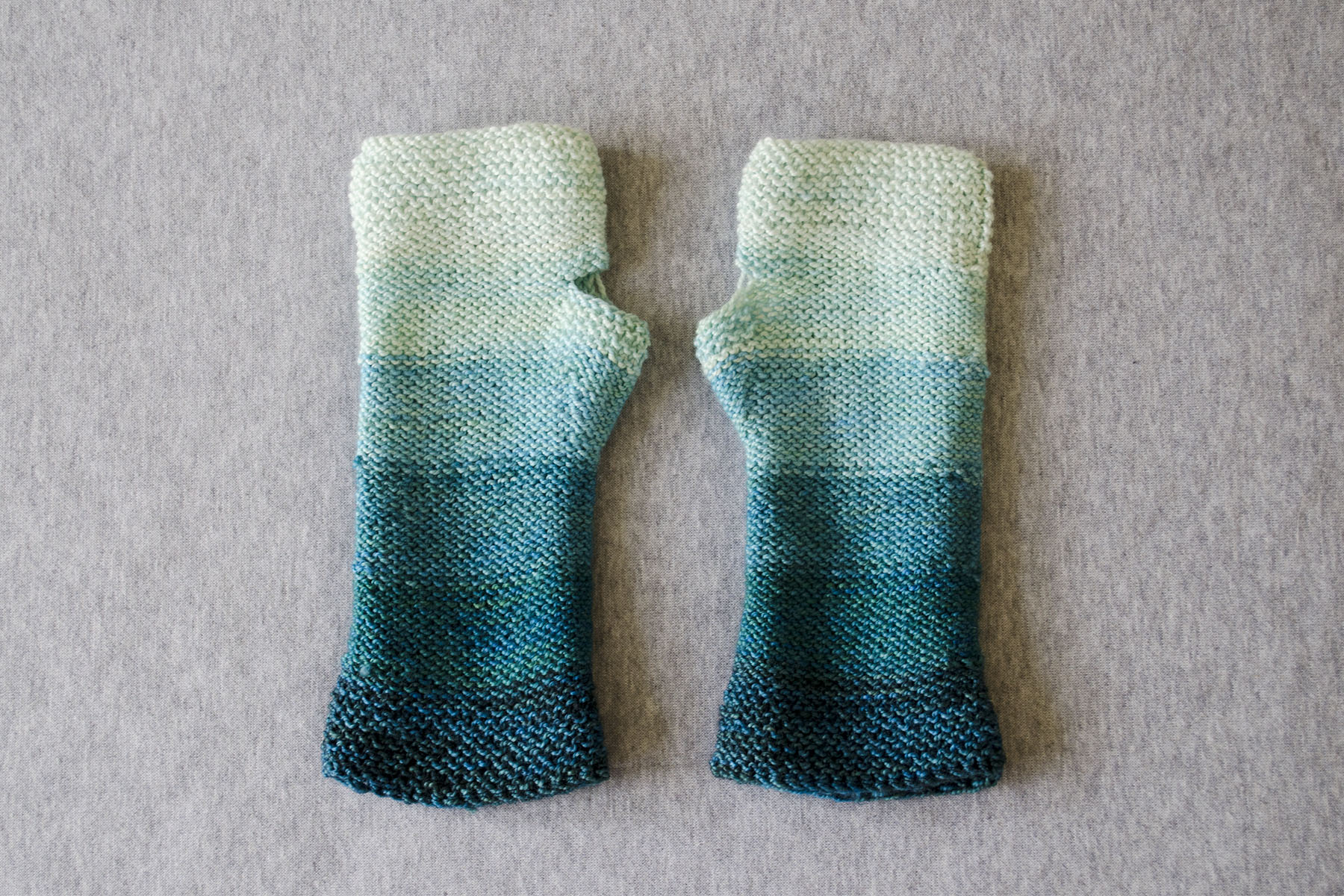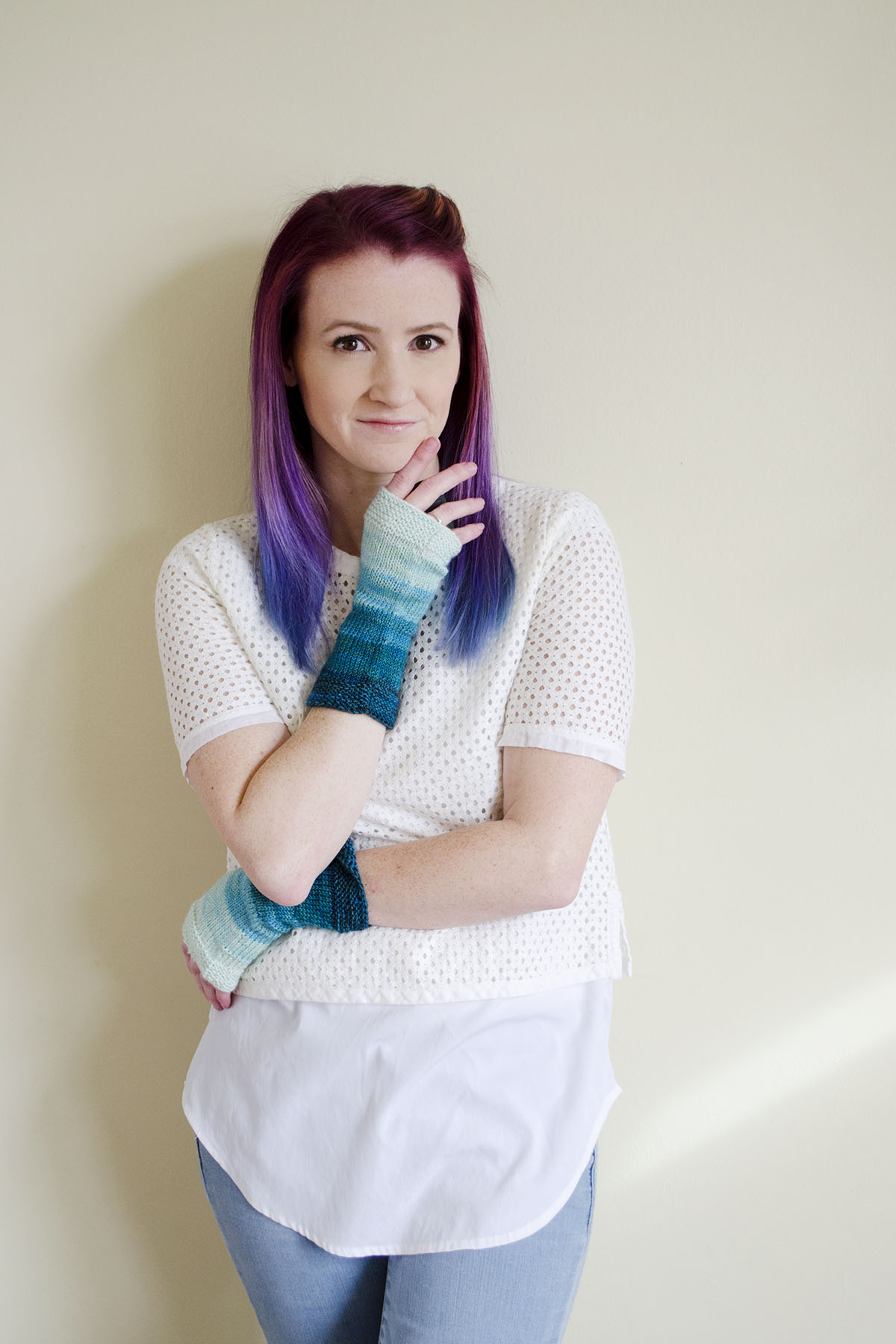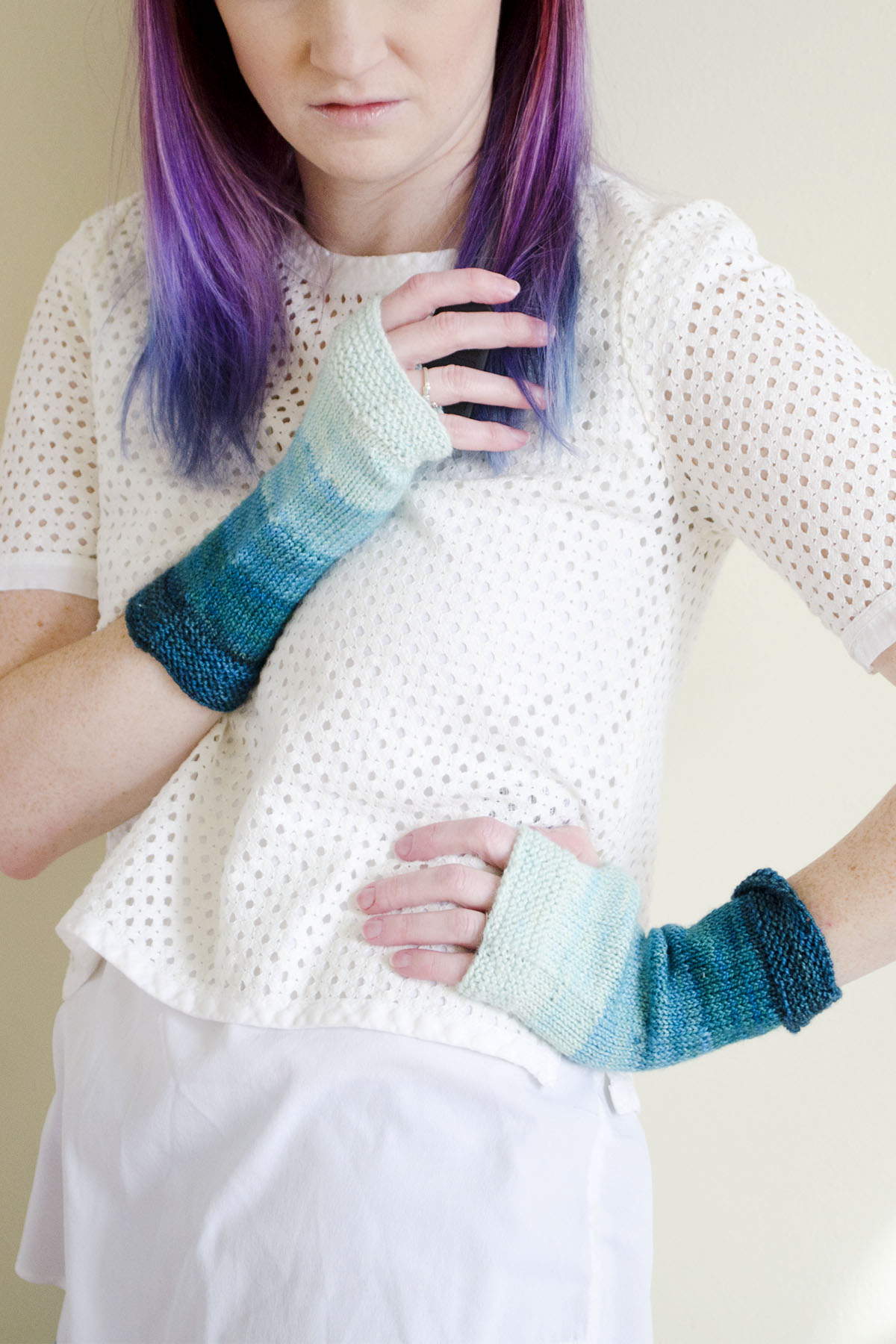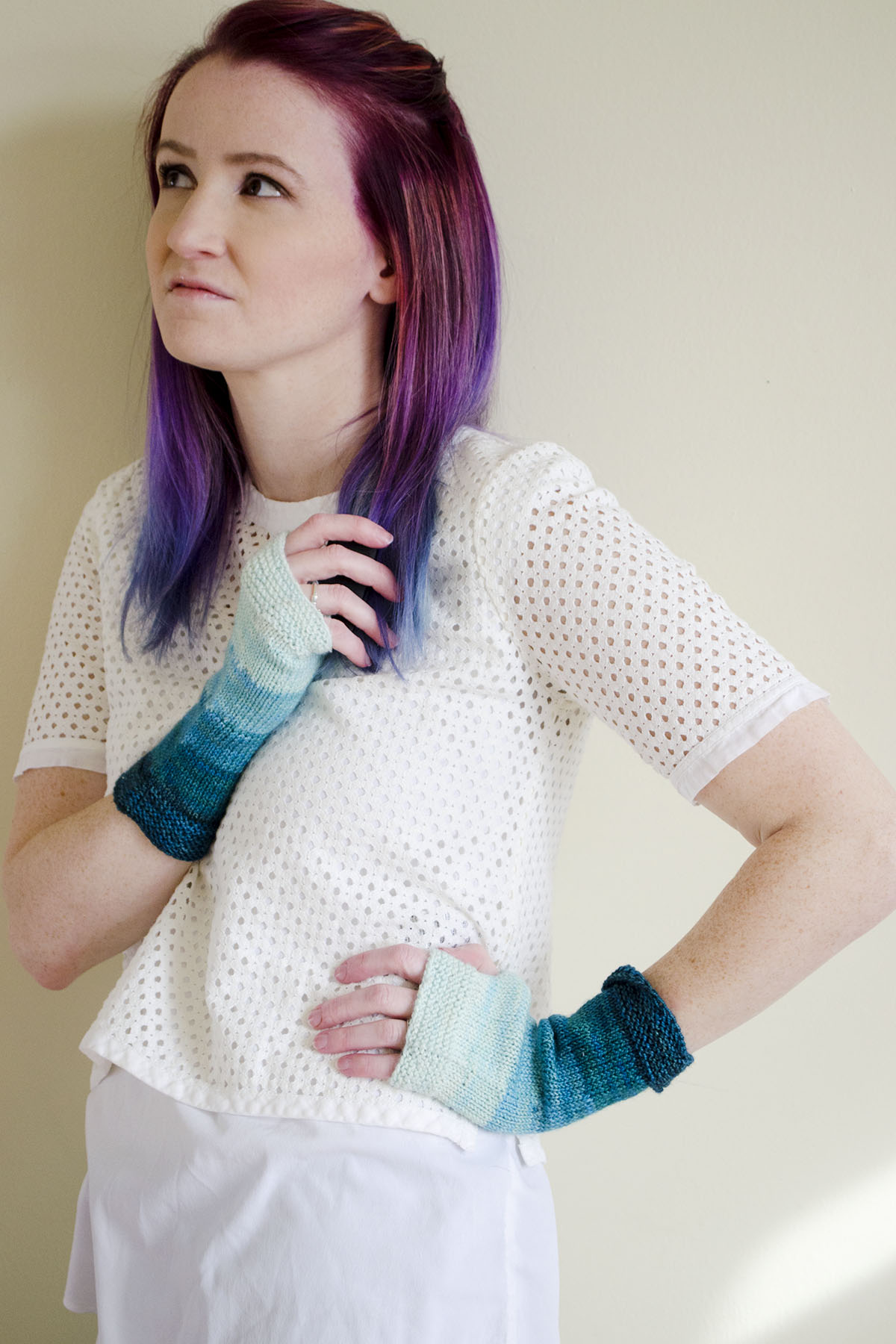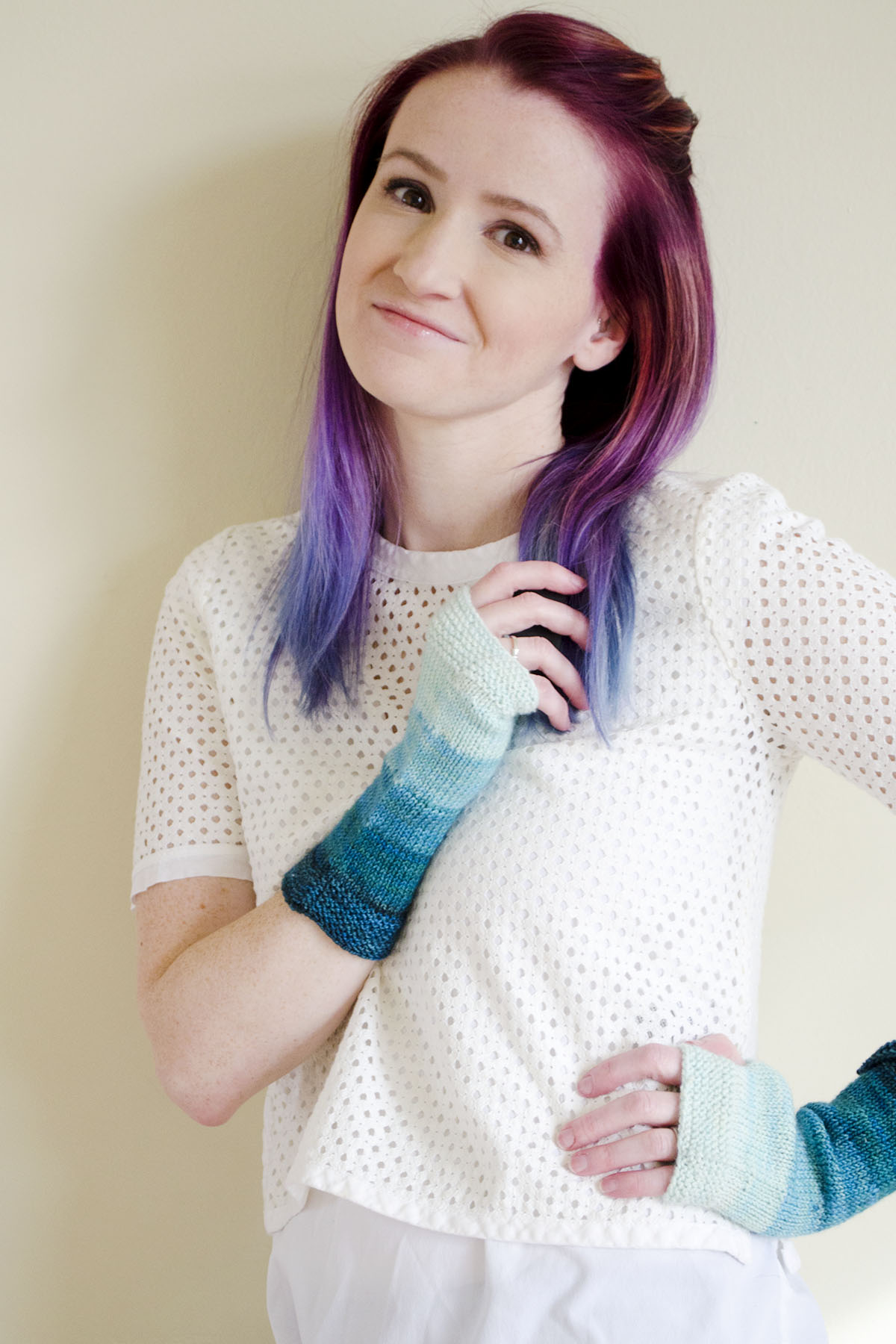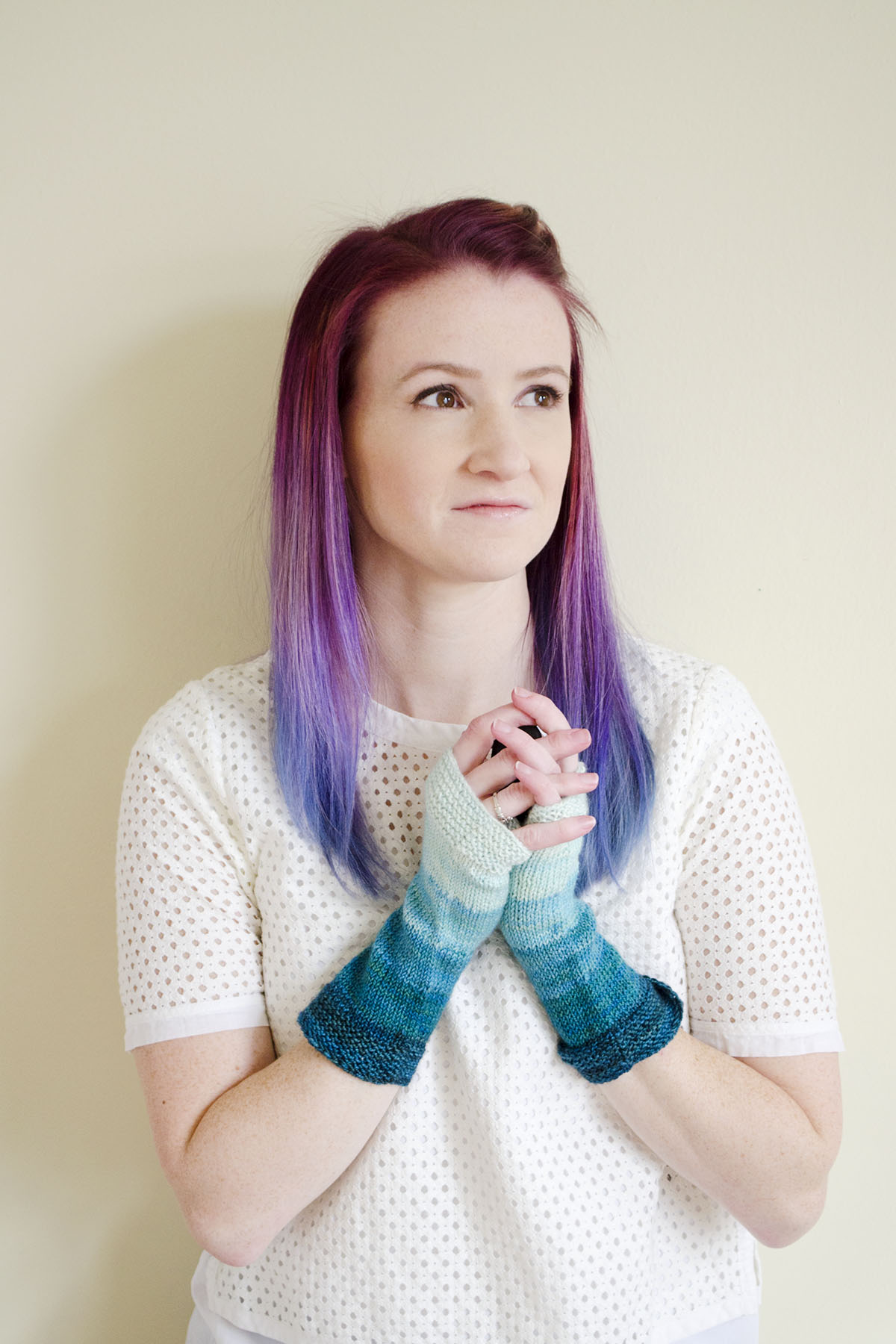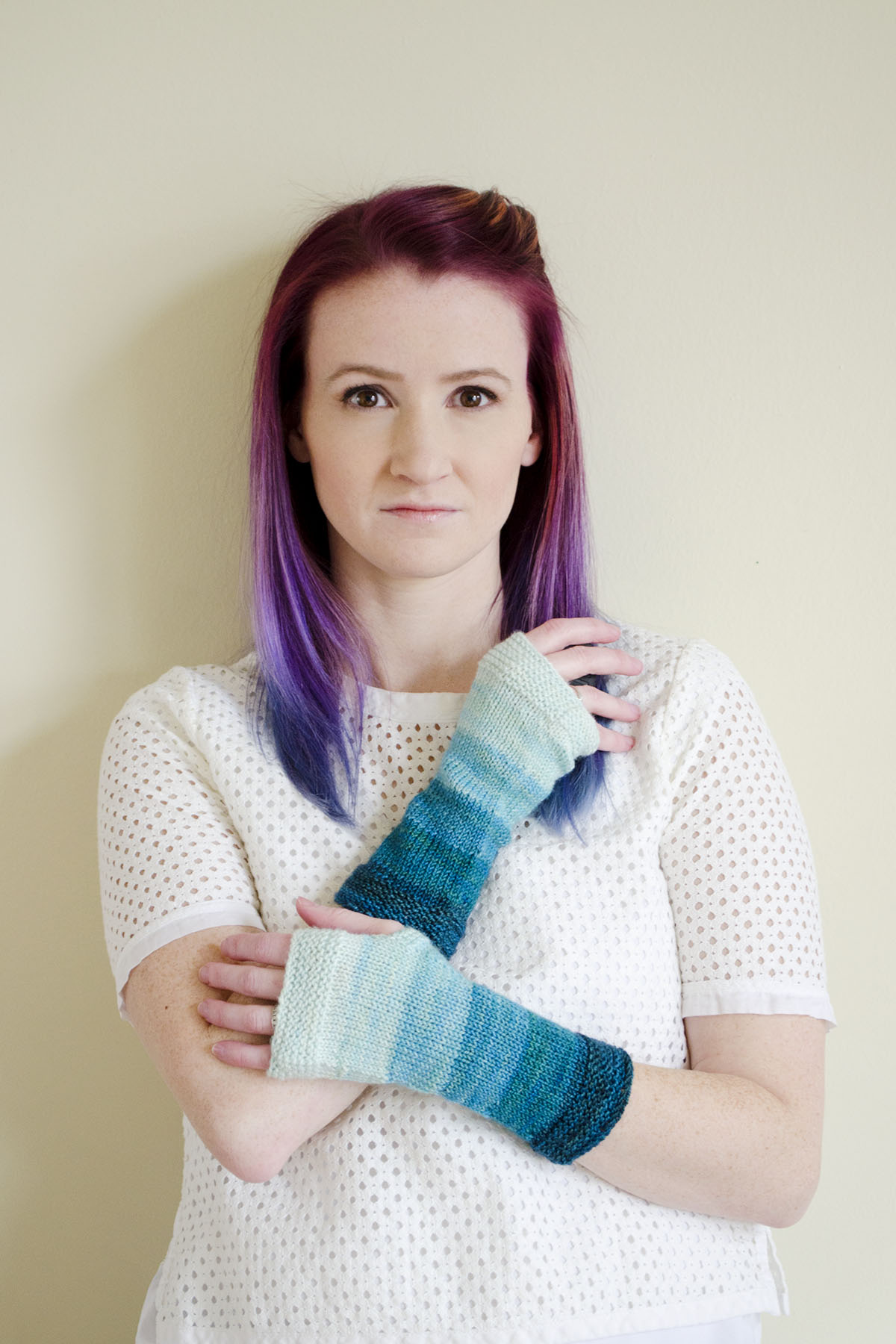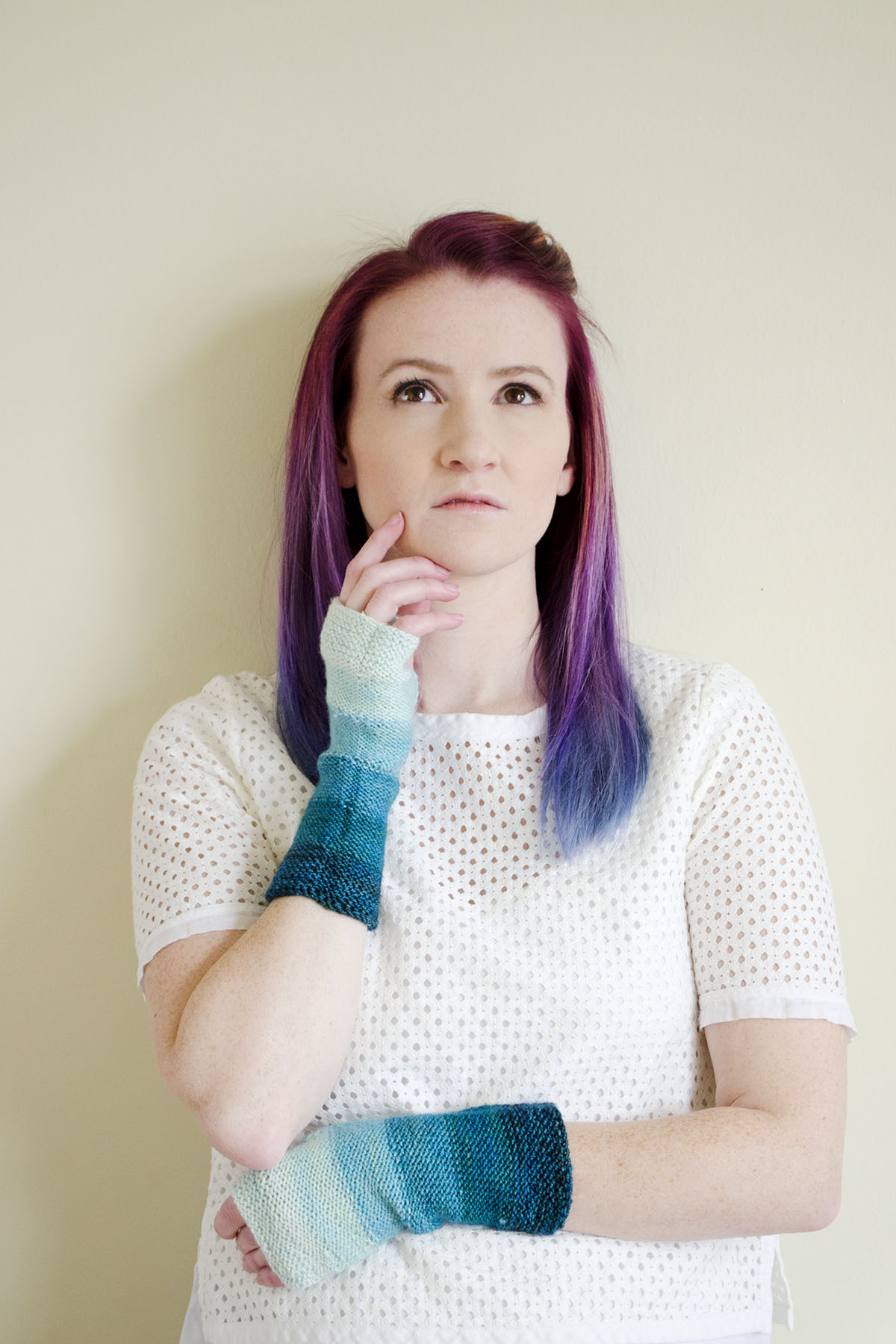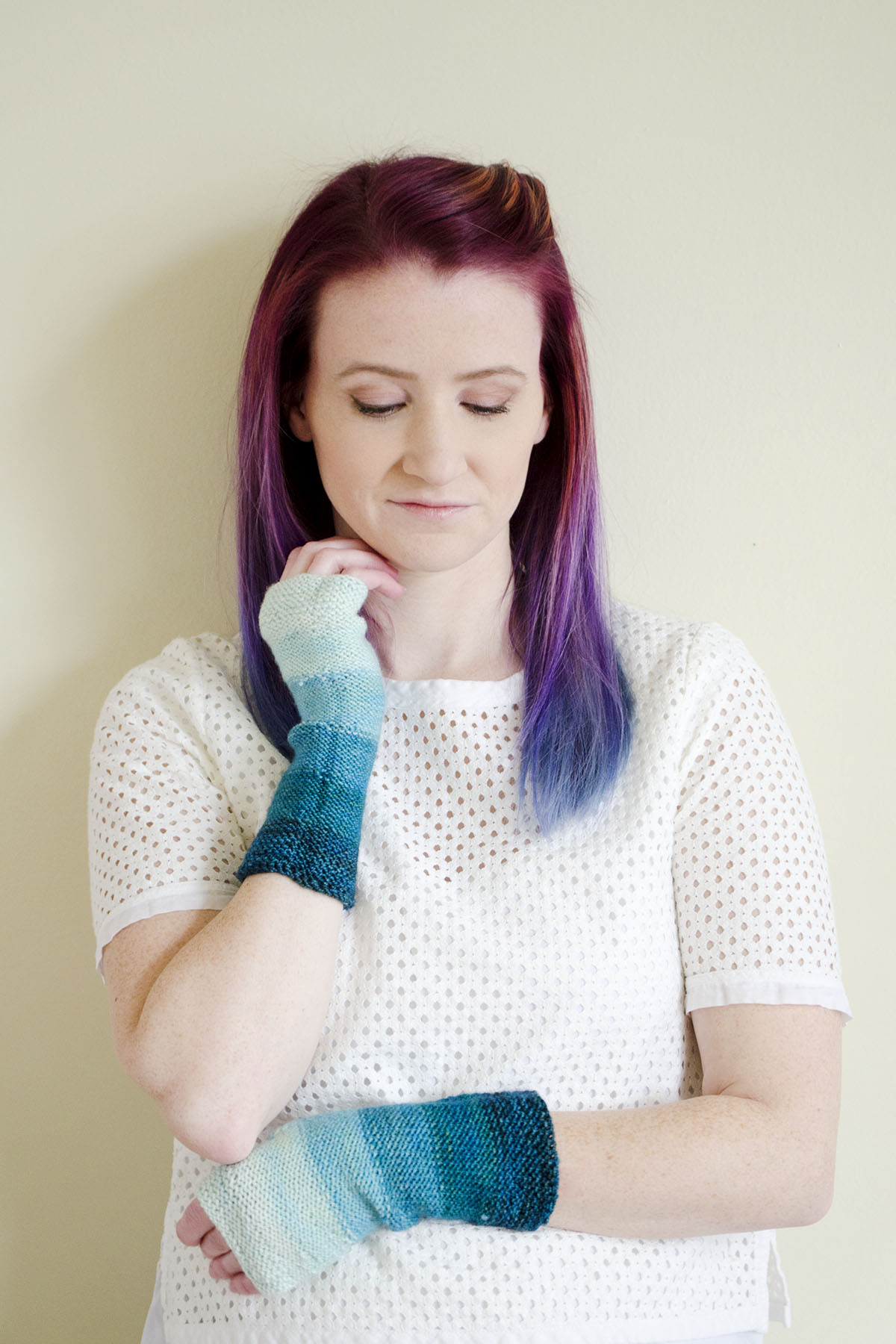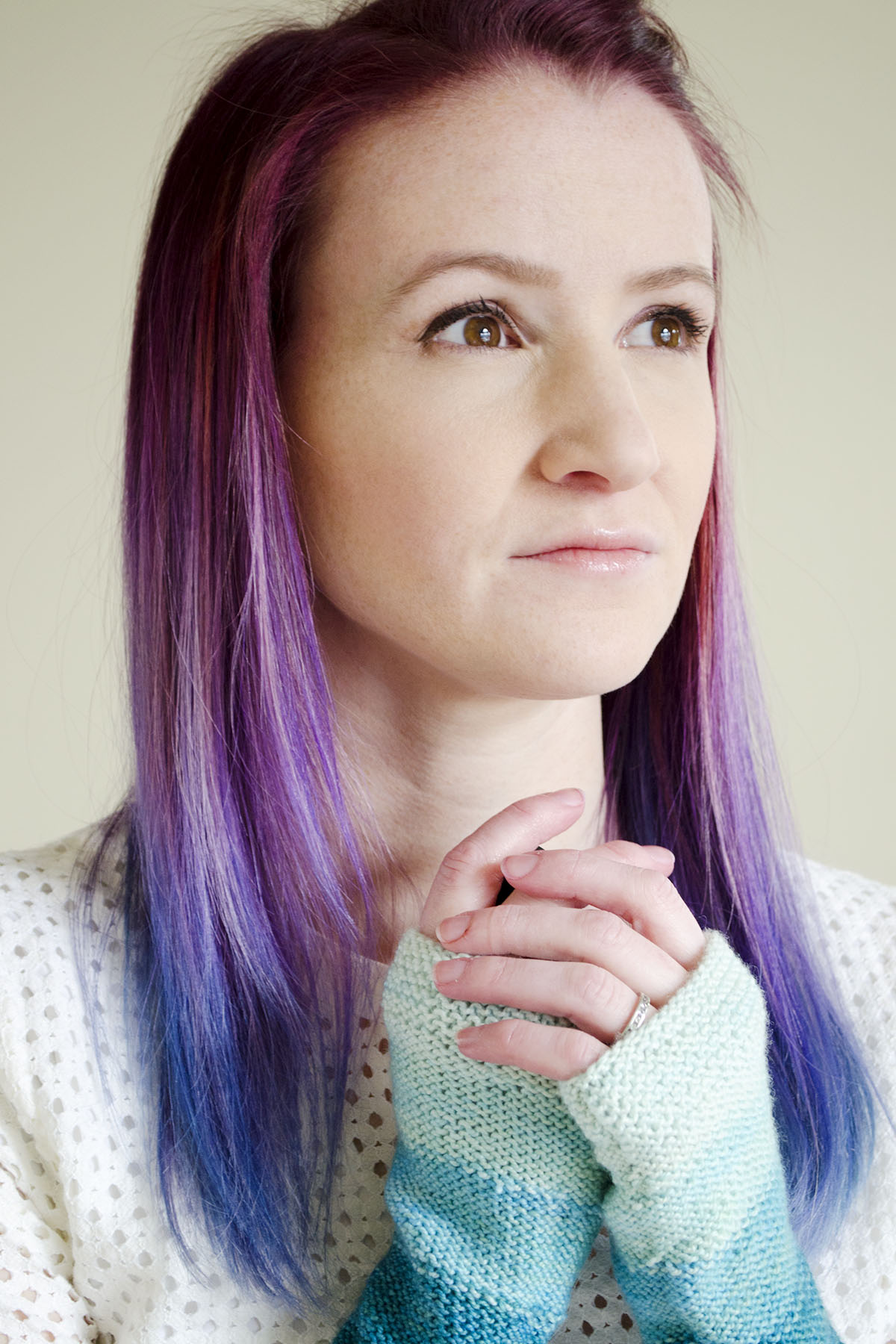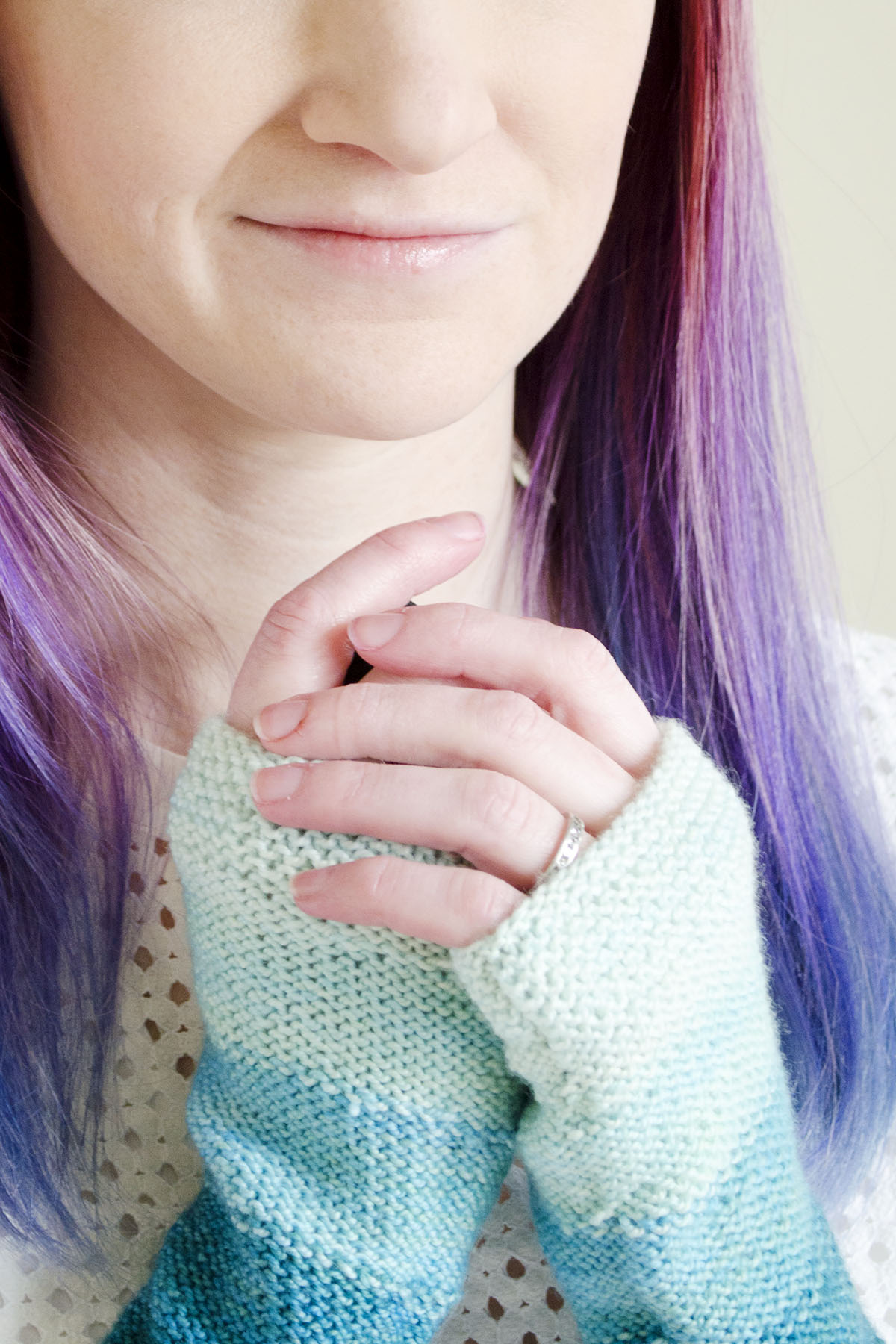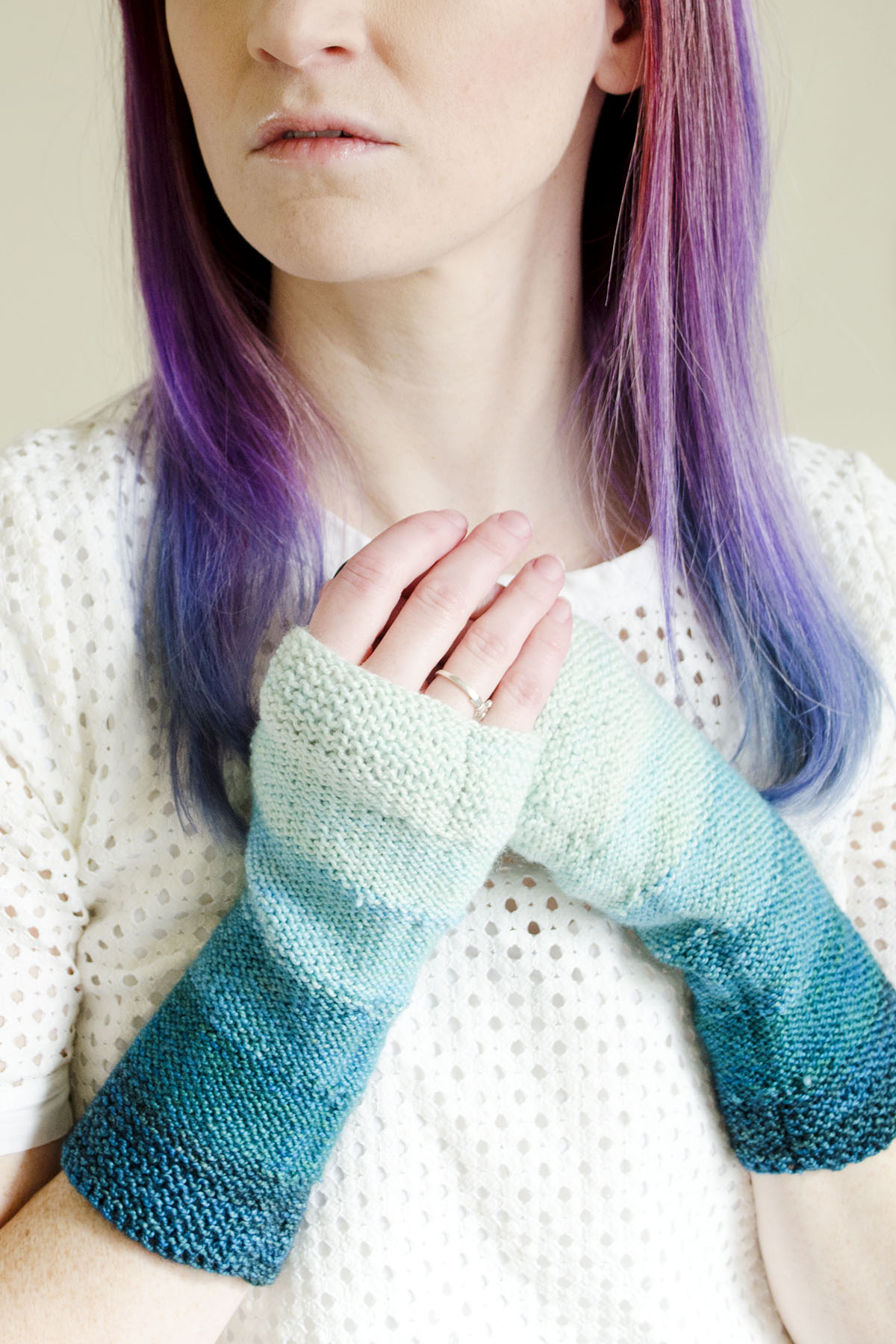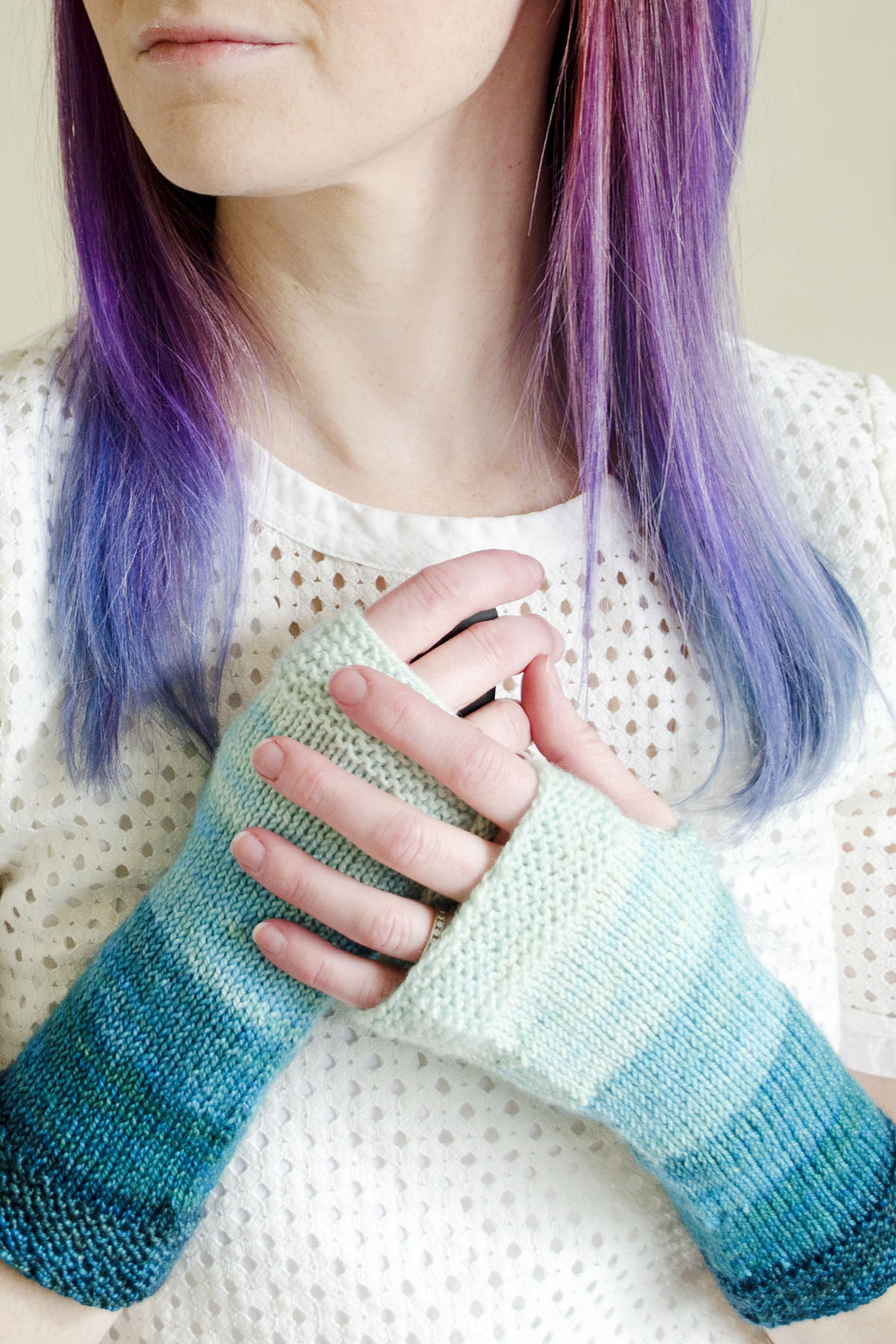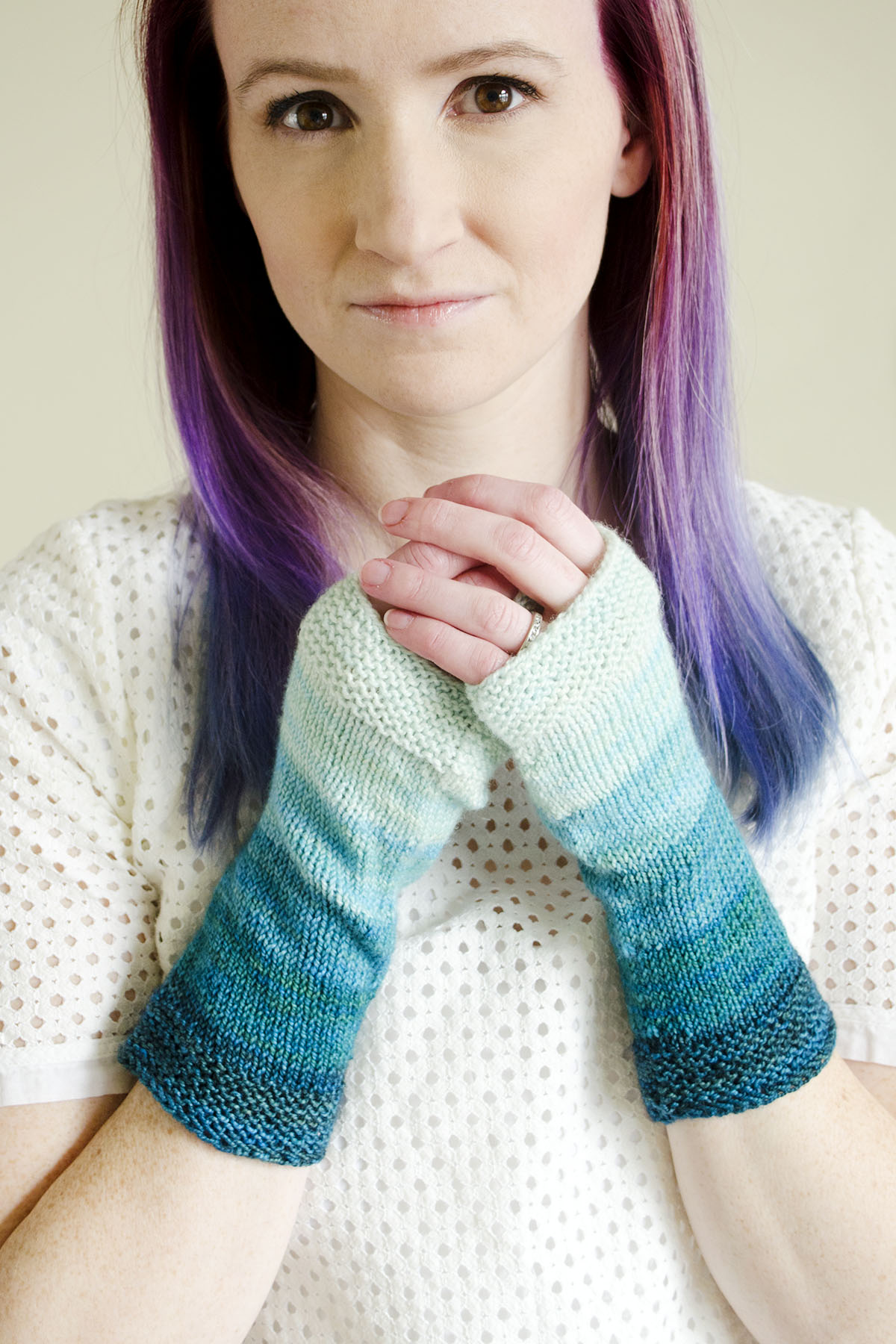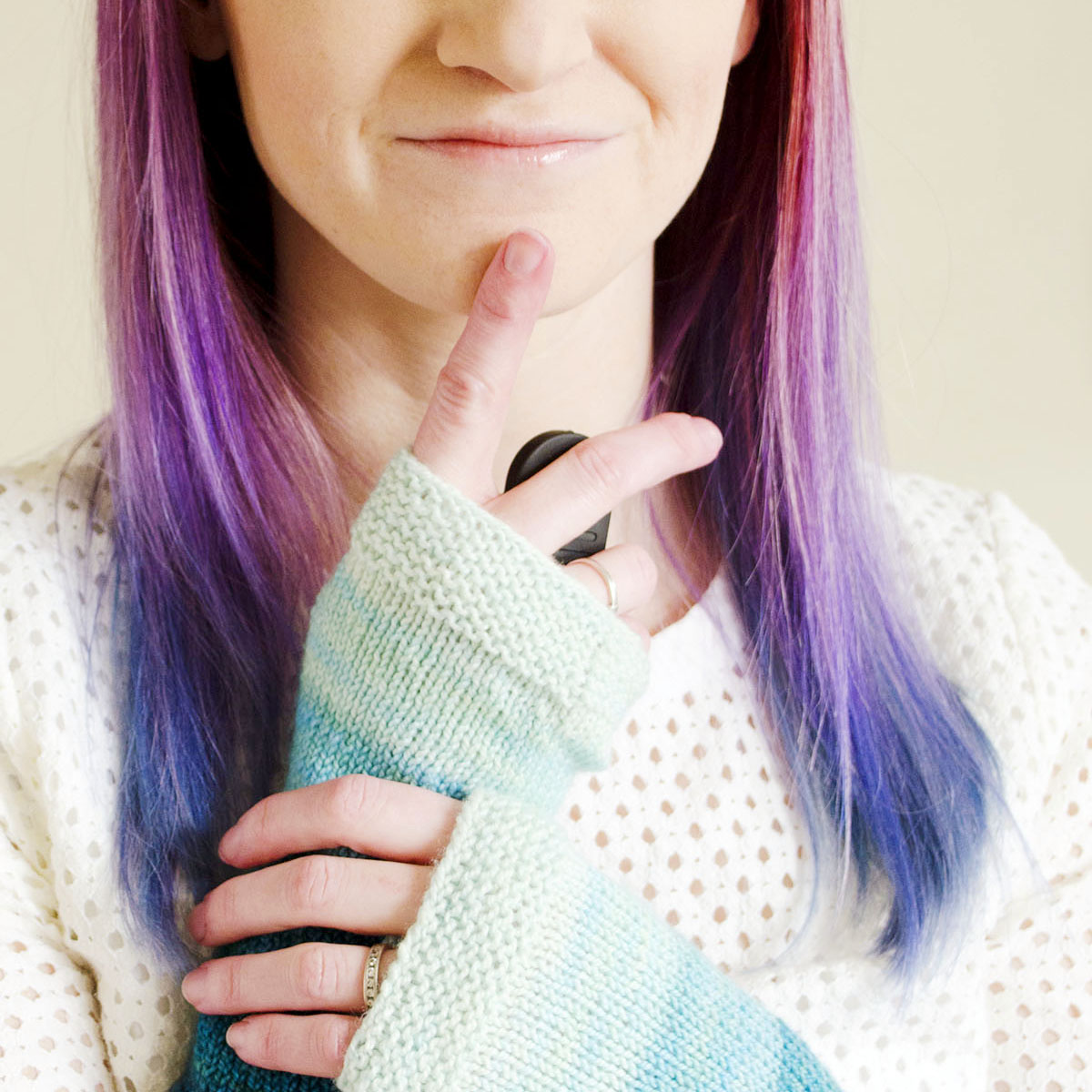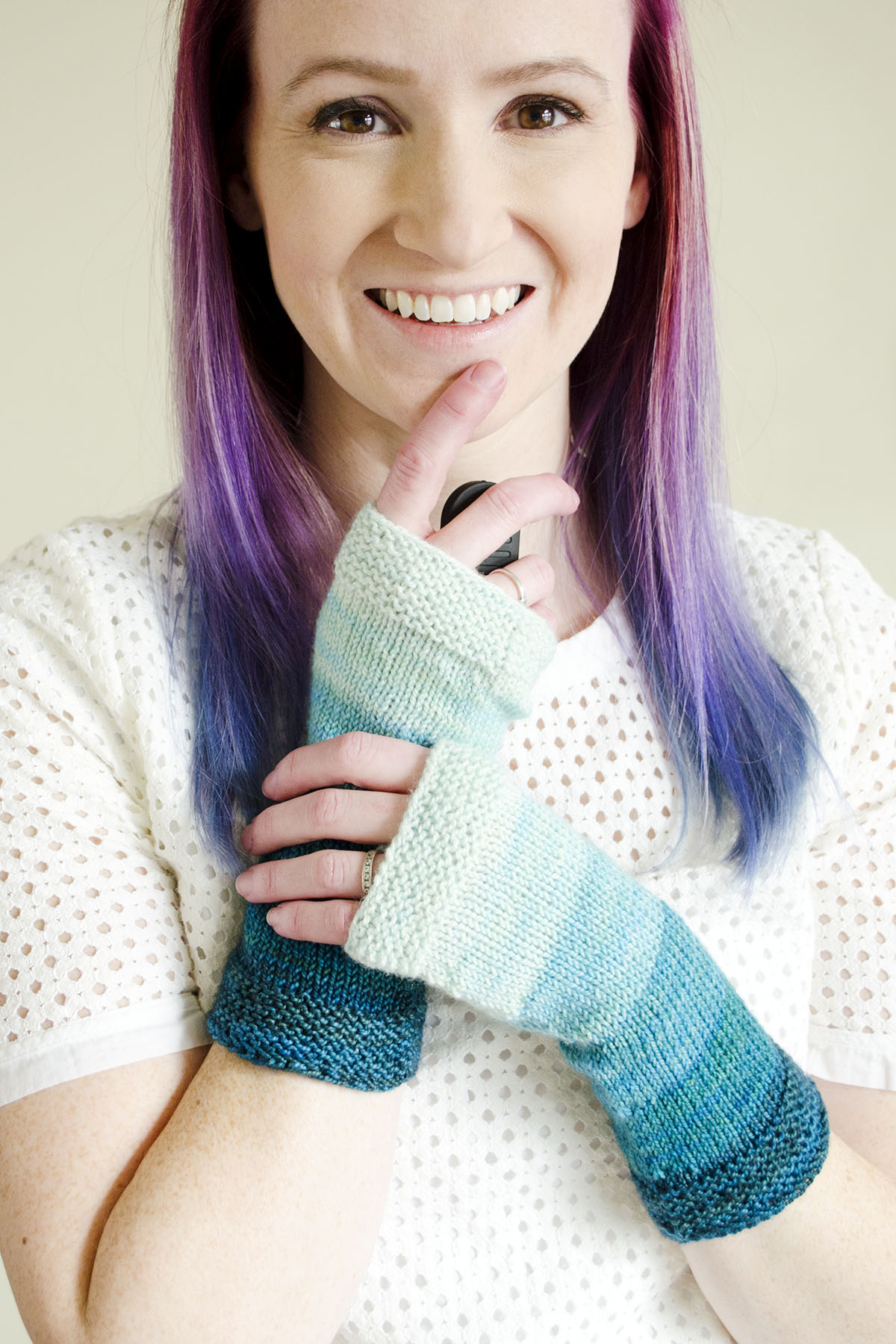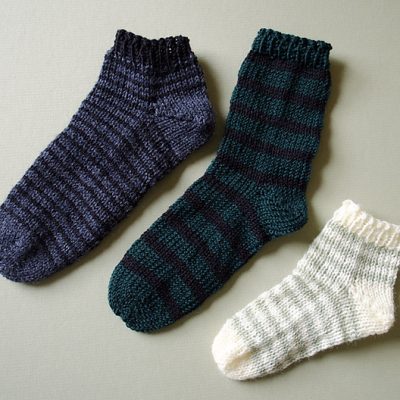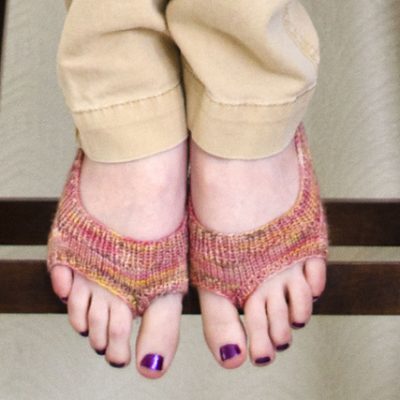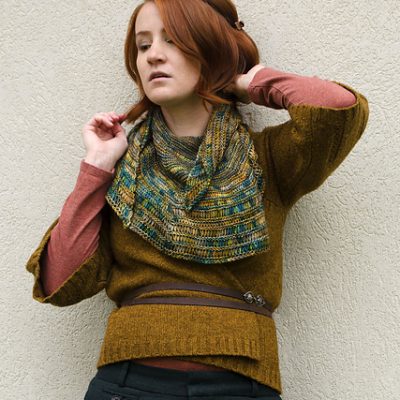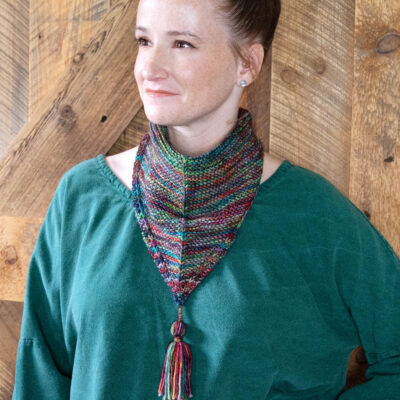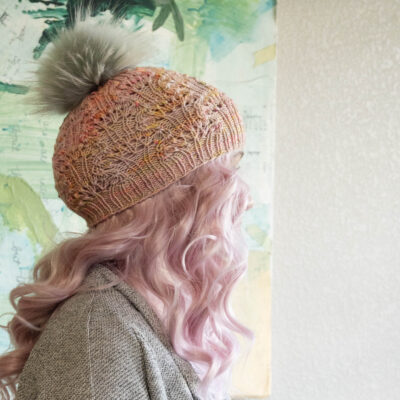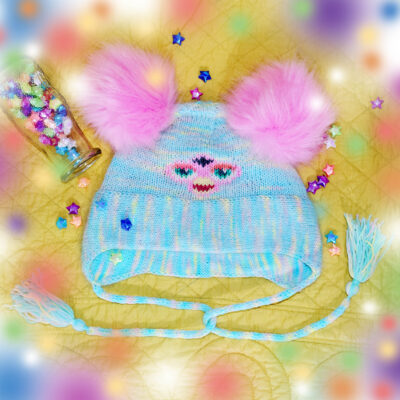$0.00
Product Description
If you enjoyed this freebie, consider leaving me a tip on https://ko-fi.com/knitoriousshe !
Size: Average adult (6.5” – 9”/16.5 – 23 cm palm circumference). This design has a bit of negative ease for a snug fit. If you prefer a loose fit, bump up a needle size!
Yarn: 100 yards of sock weight yarn in 6 colors. Sample shown in Marianated Yarns Perfection Gradient Set, colorway Smooth Sailing. This is a great design to use gradients or super loud colorways!
Needles: Size US 3/3.25 mm or US 2/2.75 mm circular needles with long (40”/100 cm) needles, or size needed to obtain gauge.
If your palm circumference measures 6.5 – 7.5”/16.5 cm – 19 cm, use the smaller size needles for the entire pattern. If your palm circumference measures 7.75” – 9”/19.5 – 23 cm, use the larger size needles for the entire pattern. See diagram at right for a guide on where to measure from.
Gauge: 6.5 stitches and 6 rows = 1”/2.5 cm in Stockinette stitch worked in the round on the larger needles, or 7 stitches and 7 rows = 1”/2.5 cm in Stockinette stitch worked in the round on the smaller needles.
Notions: 2 st markers.
Techniques: Knitting in the round, casting on in the middle of a row, and basic decreases.
Pattern Notes: These mitts are worked from the top down using basic stitches. This is a good pattern for beginners to working mitts and gloves. The blocks of colors to keep life interesting. Go ahead and splurge on that set you’ve been coveting!
The sizing on this pattern span from a small woman up to a large man. Make sure you check your palm measurement to ensure you are casting on for the right size! This unisex pattern looks just as great on a man as it does on a woman. It is also reversible!
This pattern is written for 1 long, circular needle using the Magic Loop method. If you prefer to use 5 double-point needles, the pattern is easy to convert. After casting on, divide the sts over the 4 needles so that the first and second needles combined have the same number of stitches as the third and fourth needle combined. Then, anytime the pattern refers to “Needle 1,” that will actually comprise the stitches on your 1st and 2nd needles together. Anytime the pattern refers to “Needle 2,” that will actually comprise the stitches on your 3rd and 4th needle.
Photos
